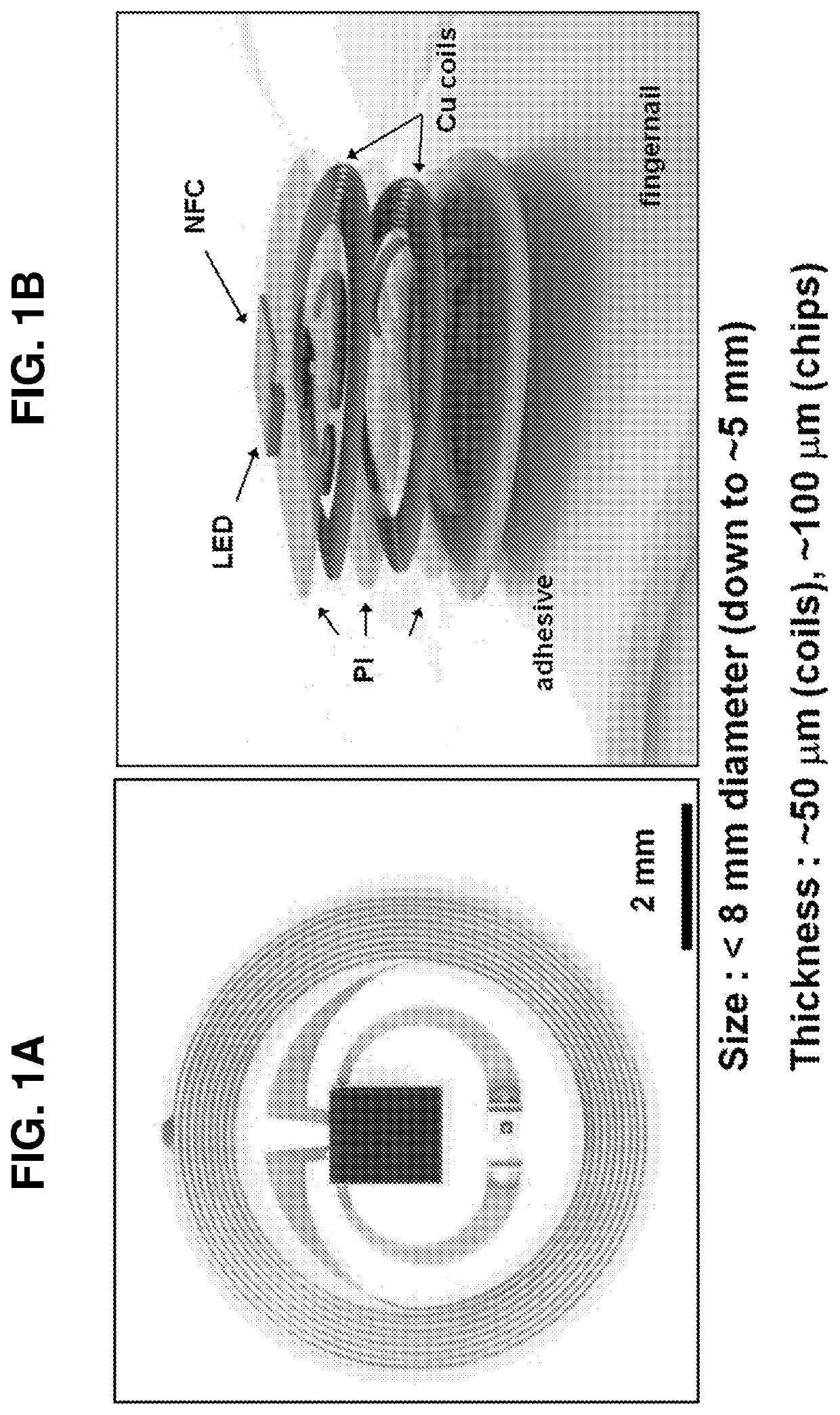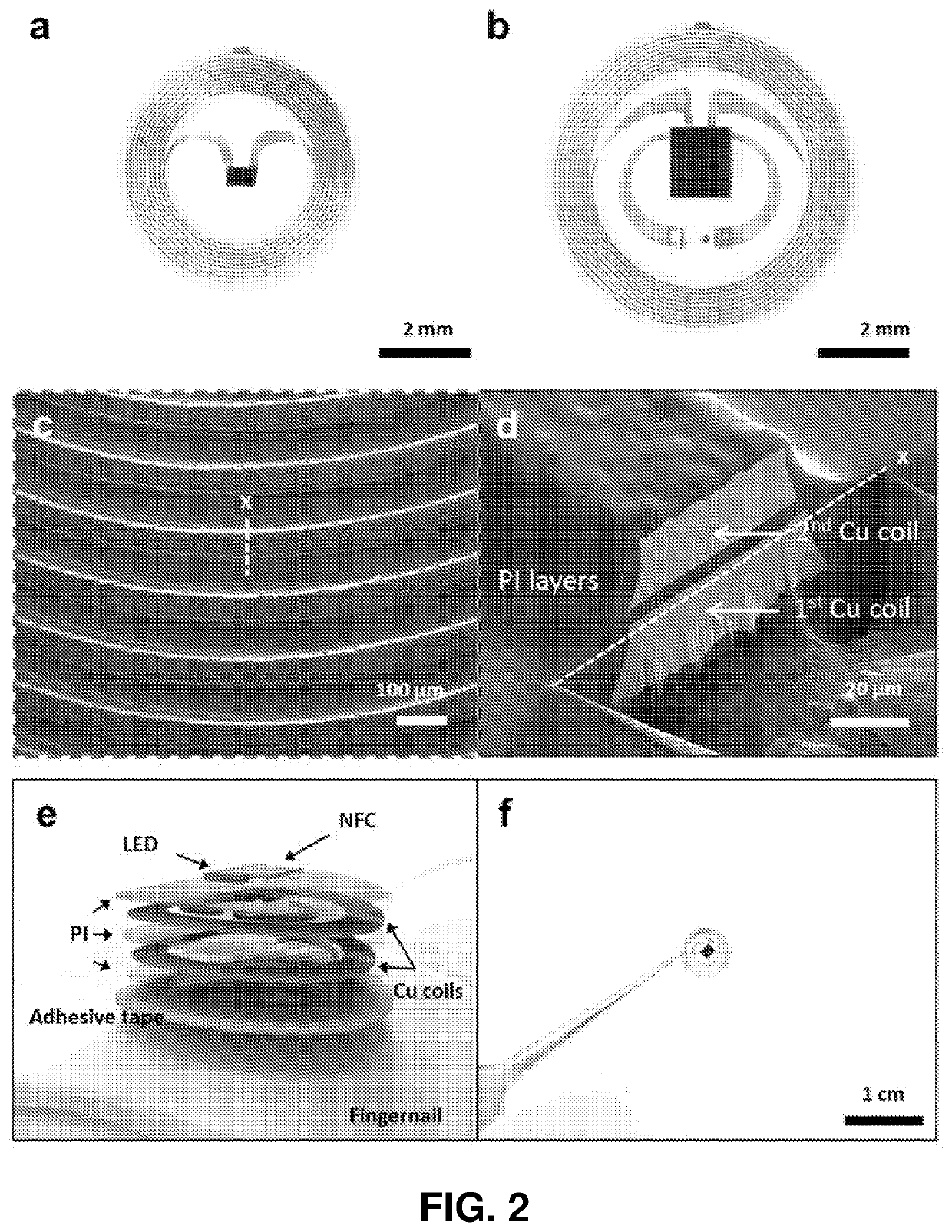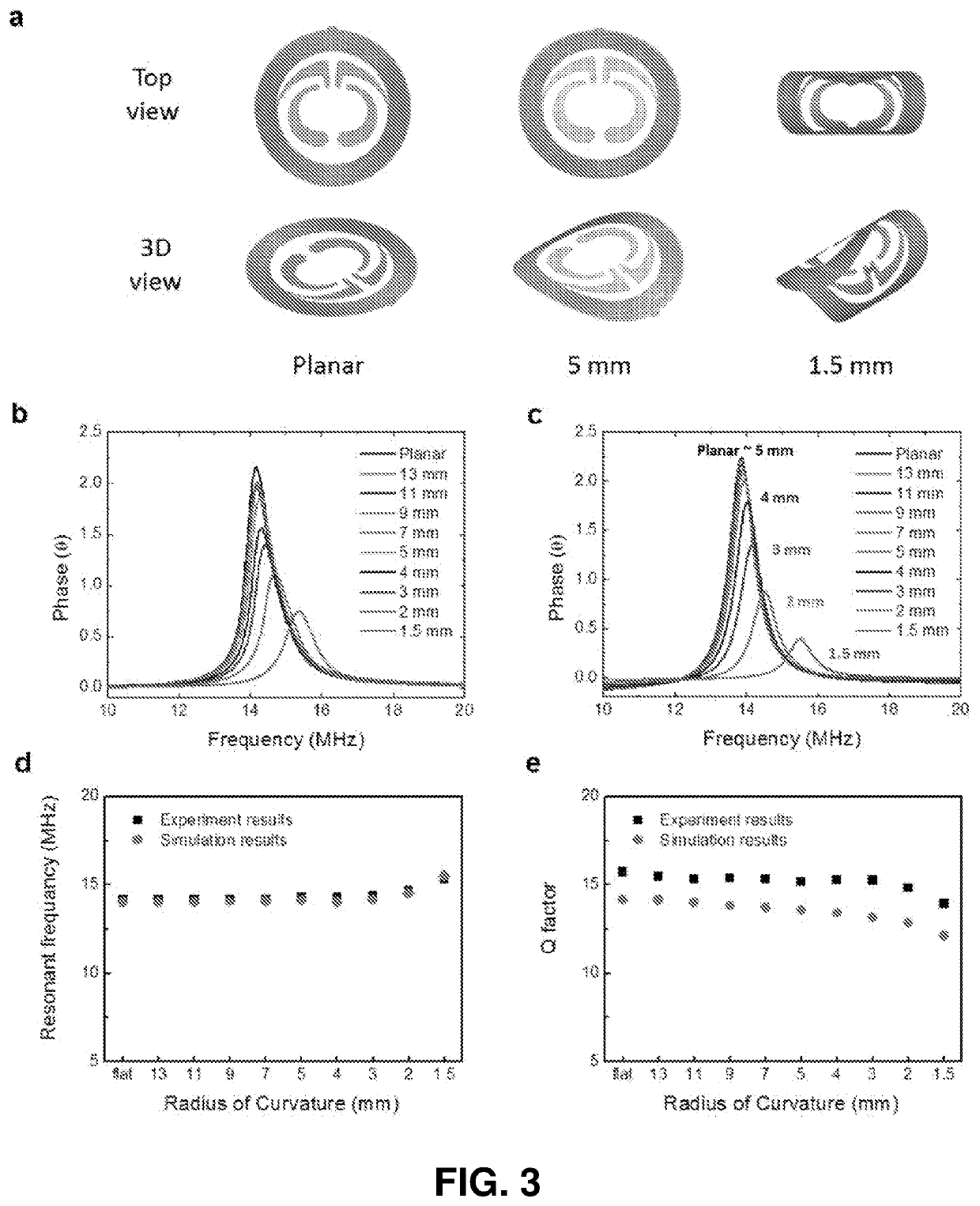Miniaturized electronic systems with wireless power and near-field communication capabilities
a technology of electronic systems and wireless power, applied in the field of miniaturized electronic systems with wireless power and near-field communication capabilities, can solve the problems of affecting the physiological state and/or chemical condition of the tissue, affecting the physiological and chemical characterization of the tissue, and affecting the performance of the instrument, so as to minimize the adverse physical effects of the tissue, reduce interfacial stress, and minimize the effect of adverse physical effects
- Summary
- Abstract
- Description
- Claims
- Application Information
AI Technical Summary
Benefits of technology
Problems solved by technology
Method used
Image
Examples
example 1
Abstract
[0122]This Example introduces a class of thin, lightweight, flexible near field communication (NFC) devices with ultraminiaturized format, and presents systematic investigations of the mechanics, radio frequency characteristics and materials aspects associated with their optimized construction. These systems allow advantages in mechanical strength, placement versatility, and minimized interfacial stresses compared to other NFC technologies and wearable electronics. Detailed experimental studies and theoretical modeling of the mechanical and electromagnetic properties of these systems establish understanding of the key design considerations. These concepts can apply to many other types of wireless communication systems including bio-sensors and electronic implants.
Introduction
[0123]Wearable electronic technologies form the foundation for a rapidly growing consumer device segment. Projections suggest that over $100 billion will be spent in materials alone over the coming decad...
example 2
l Mounted NFC Device for Password Authentication
[0157]The invention provides, for example, a fingernail mounted near field communication (NFC) device providing a unique solution for password authentication in the electronic hardware industry. The materials, design, and circuit integration enable the art of biocompatible NFC technology. The built-in NFC technology serves as a digital replacement for passwords, pin numbers, security questions, distinct biometrics, and / or text / email verification dealings. The fingernail-mounted device of this embodiment is able to wirelessly communicate with point of access readers that use NFC antennas. The point of access readers include but are not limited to smartphones, laptops, keyboards, computer mice, remote controls, safes, and / or locks. Instead of recalling passwords, fingerprint touch pads, or safe combinations, authorized fingernail-mounted device users are granted instant access to their electronics and / or safe belongings without producing...
example 3
l Mounted NFC Device for Electronic Payments
[0176]The invention provides, for example, fingernail mounted near field communication (NFC) devices providing a unique platform for mobile payment and digital wallet service providers. The materials, design, and circuit integration enable the art of biocompatible NFC technology. In some embodiments, the built-in NFC technology serves as a digital replacement for the magnetic strip found on the back of all debit, credit, and prepaid gift cards. The fingernail-mounted device is able to wirelessly communicate with point of sale readers that use NFC antennas. Instead of exchanging cash, debit or credit cards, users have the ability to make secure in-store purchases with a single touch or point. Additional payment schemes using the fingernail-mounted device include device and pin, a combination of the devices, or a combination of the device and a second method for authorization.
[0177]In an embodiment, for example, the invention has a devoted c...
PUM
 Login to View More
Login to View More Abstract
Description
Claims
Application Information
 Login to View More
Login to View More - R&D
- Intellectual Property
- Life Sciences
- Materials
- Tech Scout
- Unparalleled Data Quality
- Higher Quality Content
- 60% Fewer Hallucinations
Browse by: Latest US Patents, China's latest patents, Technical Efficacy Thesaurus, Application Domain, Technology Topic, Popular Technical Reports.
© 2025 PatSnap. All rights reserved.Legal|Privacy policy|Modern Slavery Act Transparency Statement|Sitemap|About US| Contact US: help@patsnap.com



